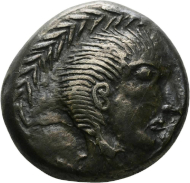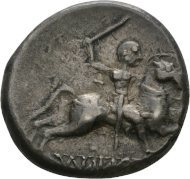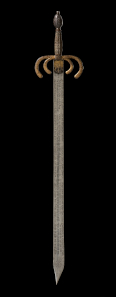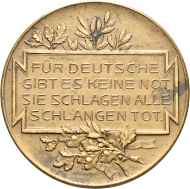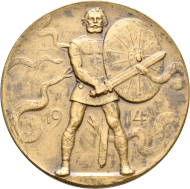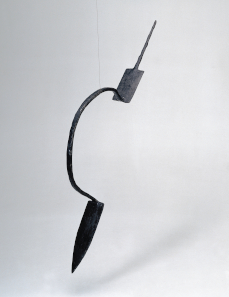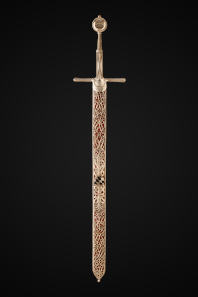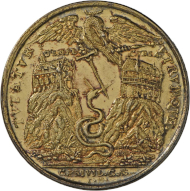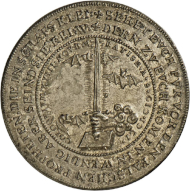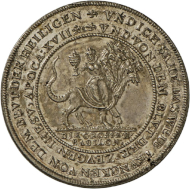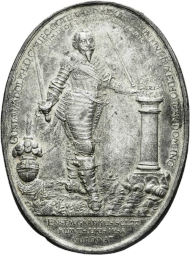October 18, 2018 – From October 13, 2018 to April 28, 2019, the Landesmuseum Württemberg in Stuttgart explores “The Fascinating World of Swords” featuring 350 objects from three and half millennia.
Boii, Tetradrachm (Nonnos type), around 60 B.C., Landesmuseum Württemberg.
King Arthur and Excalibur, Siegfried and the sword Balmung: countless legends and myths have been woven around swords and their bearers – swords as killing tools, swords as symbols of power, swords as magic weapons. The sword was the first object devised by man exclusively to fight his fellow man, the first weapon created for the sole purpose of killing other human beings. Spears, axes, arrows, bows – all these were also used as tools or as hunting weapons. It was not until the invention of the sword that man held a pure war weapon in his hands. Sword bearers wanted to be seen as people who had the means and the power to kill. The advent of the sword in the Bronze Age also transformed society by creating a new social class: sword-bearing warriors, who used their weapon as an expression of their status.
Elaborately decorated sword of Friedrich I, Duke of Württemberg, around 1594. Landesmuseum Württemberg, Stuttgart.
Making swords was expensive: only expert artisans had both the technical knowledge and access to the necessary raw materials. From its early days, the sword was therefore the prestige weapon of the elite. The technical requirements for sword-making were high: the blade had to be hard enough to deliver effective blows and stabs, but flexible enough that it did not break under stress. Swordsmiths therefore had to understand and master the properties of the metals they were forging if they wanted to create a premium product that combined strength with resilience and optimum proportions. The Ulfberht swords of the Viking era, whose blades were inscribed with the signature of their manufacturers, show how valuable these high-quality weapons could be: in addition to genuine ones, there are several counterfeits still in existence today, testifying to the popularity of brand piracy even in the Middle Ages.
Medal featuring a bearded Germanic warrior holding a sword and shield, surrounded by 5 snakes, 1914. Landesmuseum Württemberg, Stuttgart.
But several centuries later, at times when warrior elites hardly mattered anymore in Western societies and swords had lost their function as weapons, their spell remained unbroken. Whether in 19th-century paintings, 20th- or 21st-century fantasy novels or action films, or as a wooden sword in a child’s toy box – the sword has continued to fascinate us throughout the ages. Where does this fascination come from, and how is it reflected in the history of art and civilization? These are some of the questions this exhibition of Landesmuseum Württemberg will attempt to answer.
Iron cult sword, 2nd century A.D. Riegel am Kaiserstuhl, Kreis Emmendingen. Badisches Landesmuseum, Karlsruhe.
This special exhibition will present not only a wide variety of swords – ranging from bronze solid-hilted swords, Roman short swords and Alemannic longswords with golden hilts to the “Bidenhänder”, an early modern two-handed sword – but also works of art, manuscripts, film posters and merchandising products that reflect the “fascination of the sword”. It will explore the root of this long-lasting attraction. The exhibition will look at the sword from the Bronze Age to the modern era, not only as a weapon or high-quality artisanal product but also, in one of the units of the exhibition, as a symbol.
„Darth Vader“ toy, 2015. Landesmuseum Württemberg, Stuttgart.
The sword not only identifies its bearer as a member of the social elite: it can also be a symbol of might, of justice, or of power over life or death, as well as a metaphor of the struggle for freedom. The exhibition will also pay special attention to the role of the sword in magical and religious rituals. Whether as a sacrifice in moors and lakes, as a cult object, or as an object believed to have special magical abilities, swords were often treated in a manner bearing witness to their significance beyond their use as a pure weapon. The way various cultures have viewed swords underscores their symbolism and iconographic effect. In popular culture, swords represent the ultimate weapon in the battle of good against evil: Jedi knights, Blade the Vampire Hunter, the Highlander, or Conan the Barbarian are all heroes who wield their blades to defeat their enemies. A special theme of swords in popular culture is the sword-bearing woman. Judith and Joan of Arc are well-established figures in art history, but nowadays there are also countless heroines and female fighters popular in the fantasy and action genre.
The sword of a duke of Württemberg, 1495. Landesmuseum Württemberg, Stuttgart.
The “fascination of the sword” will be experienced by visitors on different levels while offering them the opportunity to find out more about the cultural history of this legendary weapon. Exploring the history of swords from different angles will allow visitors to better understand the phenomenon of their unbroken attraction.
The exhibition also features a selection of coins depicting swords, warriors, and battle scenes:
Medal marking the Diet of Regensburg, 1601. Landesmuseum Württemberg.
„Pfaffenfeindtaler“, 1622, Landesmuseum Württemberg.
Medal honoring King Gustav II Adolph of Sweden, around 1630. Landesmuseum Württemberg.
A richly illustrated catalogue and an extensive programme of special events will accompany the exhibition.
More information on this exhibition is available on the museum website.




